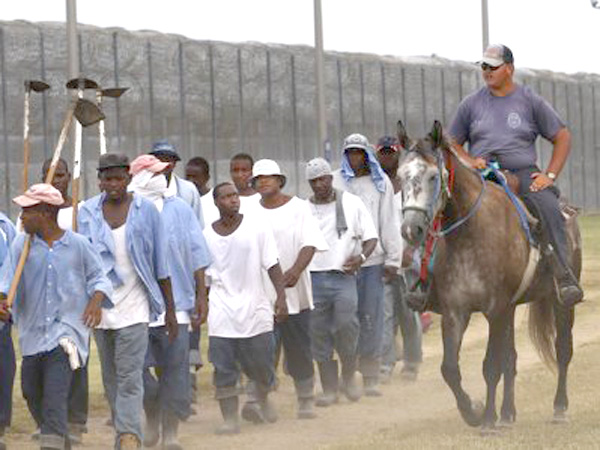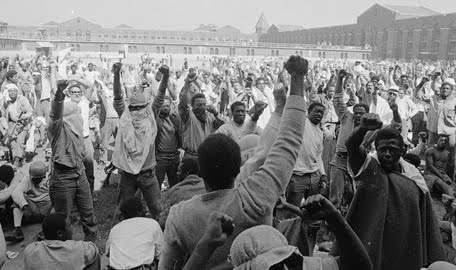
Louisiana Prison. Image borrowed from: http://smithearl8.wordpress.com/2013/06/03/mass-incarceration-private-prisons-black-males/
“Prisons do not diminish the crime rate: they can be extended, multiplied or transformed, the quantity of crime and criminals remains stable or, worse, increases” -Michel Foucault in Discipline and Punish: The Birth of the Prison (1975/1995, p. 265)
With an estimated 2.3 million prisoners, the United States houses the largest prison population in the world. While America accounts for only 5% of the world’s total population, they account for 25% of the world’s total prisoner population (Hashimoto, 2011). African-Americans disproportionately dominate the U.S. prison population with roughly forty percent of the total population being black (2011, U.S. Department of Justice). The social implications that contribute to these staggering statistics make Michel Foucault’s Discipline and Punish: The Birth of the Prison an important text for understanding African-American inequality. Similarly, understanding African-American history makes Foucault’s text all the more valuable, for there is no better example than the United States culture to bring Foucault’s revolutionary book to life.
At the end of Foucault’s chapter “The body of the condemned,” Foucault illustrates the importance of how the past must be revealed from the present. As Foucault states: “That punishment in general and the prison in particular belong to a political technology of the body is a lesson that I have learnt not so much from history as from the present. In recent years, prison revolts have occurred throughout the world” (1975/1995, p. 30).
Foucault’s reference to the prison riots that occurred throughout the world prior to 1975 seems to be an important starting point for his project. However, what prison riots are being referenced here? While Foucault generally incorporates European history throughout the text, which without question provides a coherent structure to the project, there is an element of American history that remains to be overlooked or perhaps not fully explained in Foucault’s analysis.
While it is unclear which prison riots Foucault has in mind, it is important to note that the most significant prison riots that occurred in the twentieth century took place in the United States. The most deadly was the Attica Prison riot, where 43 people were killed (Zinn, 2005). Although Foucault suggests the riots “were revolts against an entire state of physical misery that is over a century old: against cold, suffocation and overcrowding, against decrepit walls, hunger, physical maltreatment” (p. 30), the prison riots throughout the United States also contained elements of racism, particularly with America’s vicious legacy of white supremacy.

Prisoners raise the black power fist during the 1971 Attica Prison riots in New York. Image borrowed from: http://radical70s.blogspot.ca/2010/05/on-this-day-attica-prison-uprising.html
The Attica Prison riot was sparked by the death of Marxist-Leninist, Black Panther, and founder of the Black Guerilla Family, George Jackson, who was murdered in California’s San Quentin State Prison by prison guards just weeks before the uprising (Zinn, 2005). According to Howard Zinn: “Forty-four percent of the inmates [in Attica] were black; 100 percent of the guards were white” (p. 520). The disproportionate rate of blacks to whites throughout American prisons reflects America’s longstanding history of institutional racism.
Why Foucault does not directly address the United States prison culture in his text is unclear. Had Foucault drawn on events from America history, such as the punishment and torture embodied in American slavery, the Black Codes, Jim Crow laws, and the rise of the prison industrial complex, perhaps Foucault would have complicated his project by committing to the structures of race–an element of power that would be too much to explain, yet is inextricably linked to America’s prison culture. For this reason alone, I wish to explore Foucault’s text and link its content with the experiences of African-Americans. In doing so, I hope to illustrate what I believe is the most compelling case for what Foucault establishes in his project: an understanding of the power structures that compose the modern disciplinary society.
